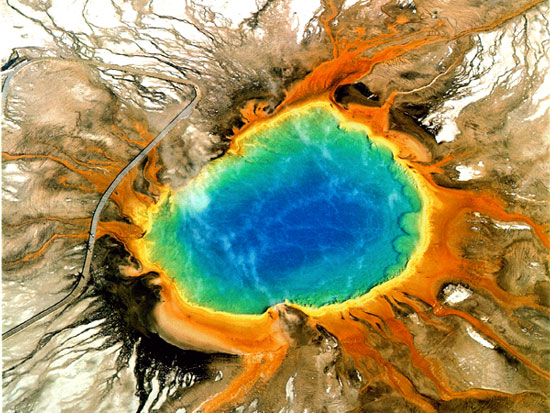Predict the wake of the super volcano Yellowstone
Although it seems to be sleeping, the Yellowstone super volcano (USA) can erupt lava in the future, and scientists are trying to improve predictability when Yellowstone wakes up.
>>>These volcanoes can "wake up" in 2012
Super volcanoes can erupt lava thousands of times more than the horrific eruption in Krakatoa of Indonesia in 1883 with the power of 13,000 atomic bombs.
2 million years ago, the super volcano that was under Yellowstone National Park was the culprit causing the fourth largest eruption in the history of the earth as recorded by the scientific community.

Scientists keep an eye on Yellowstone, with
hopefully can predict its future activities
Its last activity was about 640,000 years ago, creating an oval crater, measuring 64 x 40km.
Experts who hold evidence show that Yellowstone could explode someday with the ability to cover half of US territory under 1 meter thick ash. Fortunately, the probability, according to scientific calculations, happens in our time is quite small.
To understand more about Yellowstone's future, American experts analyzed some of the region's youngest volcanic rocks, called rhyolite, made up of silica-rich minerals.
The texture, shape and properties of crystals in the stone can provide information about when and how they form, as well as the activity deep beneath the surface.
The finding shows that the magma that produced these rocks from the beginning moved upwards from 8 to 10 km from the surface.
Researchers believe that any mechanism of volcanic activity in Yellowstone will most likely originate from these sources, coinciding with the three major faults in the region.
Two of these have seen volcanic activity from 70,000 to 174,000 years ago, and the other fault is the most volatile activity in the crater.
Researcher John Stix of McGill University and colleagues Guillaume Girard of the University of Iowa published a report in the September issue of GSA Today.
- Video: Super American volcano can erupt earlier than expected
- Yellowstone volcano is dying?
- Water circuit in the United States unusually sprayed: Signs of super volcanoes waking up, killing many people?
- Decipher the mysterious eruption of the super volcano
- Volcanoes can 'wake up' in 2012
- Super volcanoes in America can explode early and wipe out life
- Super volcano melted asphalt
- Super volcano about to wake up, threatening 100 million people
- 4 super volcanoes threaten humanity
- Specialist disaster warning in the Northern Hemisphere
- The risk of activating super volcanoes can kill millions
- NASA intends to drill through super volcanic hearts to prevent disaster
 Is the magnetic North Pole shift dangerous to humanity?
Is the magnetic North Pole shift dangerous to humanity? Washington legalizes the recycling of human bodies into fertilizer
Washington legalizes the recycling of human bodies into fertilizer Lightning stone - the mysterious guest
Lightning stone - the mysterious guest Stunned by the mysterious sunset, strange appearance
Stunned by the mysterious sunset, strange appearance